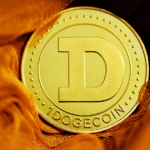Blockchain has transcended its origins in cryptocurrency and become synonymous with innovation and disruption across various industries. Often referred to as the “invisible chain,” blockchain technology refers to a chronological and unchangeable record of transactions with an unparalleled potential to revolutionize the way we transact, store data, and establish trust in an increasingly interconnected world.
What is Blockchain Technology
Blockchain technology is a decentralized and distributed ledger system that records transactions across a network of computers in a secure, transparent, and immutable manner. At its core, blockchain consists of a chain of blocks, with each block containing a batch of transactions, timestamped and cryptographically linked to the preceding block.
How it Works

Learn more: How To Build Legitimacy In Digital Landscape: The Transparent Approach To Blockchain.
Is Blockchain Secure?
Blockchain technology is often touted for its security features, but it’s important to understand that while blockchain provides robust security measures, it is not entirely immune to risks and vulnerabilities.
Risks and Vulnerabilities
Coding Errors and Vulnerabilities
Blockchain networks are built on software code, and like any software, they may contain bugs, vulnerabilities, or coding errors that attackers could exploit. These vulnerabilities can lead to security breaches or unexpected behavior in the blockchain network.
51% Attacks
In a 51% attack, a malicious actor or group of actors gains control of the majority of the network’s computational power, allowing them to manipulate transactions, double-spend coins, or disrupt the network’s operation. While such attacks are difficult to execute and require significant resources, they are not impossible.
Smart Contract Vulnerabilities
Smart contracts, self-executing contracts with the terms of the agreement directly written into code, are susceptible to vulnerabilities and exploits. Coding errors or flaws in smart contracts can lead to unintended consequences, security breaches, or financial losses.
Human Factors
Human error, negligence, or malicious insider activities can pose security risks to blockchain networks. Weak password practices, improper handling of private keys, or unauthorized access to sensitive information can compromise the security of the blockchain network.
Security Features of Blockchain Technology

Decentralization
Blockchain operates on a decentralized network of nodes, meaning there is no central authority or single point of control. Instead, transactions are verified and recorded by a distributed network of participants known as nodes.
Each node maintains a copy of the blockchain, ensuring redundancy and fault tolerance. This decentralization eliminates the need for intermediaries, such as banks or financial institutions, reducing the risk of censorship, manipulation, or single points of failure.
Decentralization is fundamental to the resilience, security, and trustworthiness of blockchain networks, empowering individuals and organizations to transact and interact without relying on centralized authorities.
Transparency and Immutability
Transactions recorded on the blockchain are transparent and immutable, meaning they cannot be altered, reversed, or deleted once confirmed. Each transaction is timestamped and cryptographically linked to the previous one, forming a chronological and unchangeable record of transactions. This transparency ensures that all participants in the network have access to the same information, fostering trust and accountability.
Immutability guarantees the integrity and permanence of the data stored on the blockchain, making it resistant to fraud, tampering, or unauthorized modification. As a result, blockchain provides a tamper-proof and auditable ledger suitable for a wide range of applications where data integrity is paramount.
Consensus Mechanisms
Consensus mechanisms are protocols used to validate and confirm transactions on the blockchain, ensuring that all participants agree on the validity of transactions and the state of the ledger. Proof of Work (PoW) and Proof of Stake (PoS) are two common consensus mechanisms employed by blockchain networks.
| · In PoW, participants, known as miners, compete to solve complex mathematical puzzles to validate transactions and add new blocks to the blockchain.
· In PoS, participants are chosen to validate transactions based on the number of coins they hold or stake in the network.
|
Consensus mechanisms ensure the security and integrity of the blockchain by preventing double-spending, ensuring that only valid transactions are added to the ledger, and incentivizing participants to act honestly.
Cryptographic Security
Cryptography plays a crucial role in securing transactions and protecting the privacy and confidentiality of data exchanged on the blockchain. Public-key cryptography is commonly used to authenticate transactions and control access to digital assets.
Each participant in the network has a public key, which serves as their address or identity, and a corresponding private key, which is used to sign transactions and prove ownership of digital assets.
Cryptographic hash functions are used to generate unique identifiers for blocks and transactions, ensuring their integrity and preventing tampering. By leveraging cryptographic techniques, blockchain technology provides robust security and privacy protections, mitigating the risk of unauthorized access, fraud, or data breaches.
Pros And Cons Of Blockchain Technology
| Pros | Cons |
| Decentralization: Enhances security and removes the need for intermediaries. | Scalability Issues: Limited transaction processing speed and capacity. |
| Immutable Ledger: Transactions are recorded permanently and cannot be altered. | Energy Consumption: Proof of Work (PoW) consensus mechanism requires significant computational power. |
| Transparency: Provides a transparent and auditable record of transactions. | Lack of Regulation: Legal and regulatory uncertainty in some jurisdictions. |
| Security: Cryptographic security mechanisms ensure data integrity and confidentiality. | Risk of 51% Attacks: Possibility of malicious actors gaining majority control of the network. |
| Efficiency: Streamlines processes, reduces administrative costs, and eliminates paperwork. | Complexity: Implementing and integrating blockchain technology can be complex and costly. |
| Trust: Enhances trust among participants by providing verifiable and tamper-proof records. | Privacy Concerns: Potential exposure of sensitive information stored on the blockchain. |
Applications of Blockchain Technology
Cryptocurrencies and Digital Assets
Blockchain gained prominence as the underlying technology behind cryptocurrencies like Bitcoin. However, it’s not limited to just digital currencies. Blockchain enables the creation, transfer, and management of digital assets in a secure and decentralized manner. This includes tokens representing real-world assets like real estate, art, or commodities, as well as non-fungible tokens (NFTs) representing unique digital assets.
Supply Chain Management
Blockchain enhances transparency and traceability in supply chains by recording the movement of goods from the point of origin to the end consumer. Each transaction or event in the supply chain is recorded on the blockchain, providing stakeholders with real-time visibility into the flow of goods, verifying authenticity, ensuring compliance with regulations, and combating counterfeiting and fraud.
Financial Services and Banking
Blockchain disrupts traditional financial services by providing secure, transparent, and efficient solutions for payments, remittances, and asset tokenization. Decentralized finance (DeFi) platforms leverage blockchain to offer decentralized lending, borrowing, and trading services, eliminating the need for intermediaries and providing access to financial services to underserved populations.
Smart Contracts and Decentralized Applications (dApps)
Blockchain enables the creation and execution of smart contracts, self-executing contracts with the terms of the agreement directly written into code. Smart contracts automate and enforce the execution of contractual agreements, reducing the need for intermediaries and streamlining business processes. Decentralized applications (dApps) leverage blockchain to offer a wide range of services, including gaming, social networking, supply chain management, and more.

Identity Management
Blockchain-based identity management solutions provide individuals with greater control over their personal data and digital identities. By leveraging blockchain’s cryptographic security and decentralized architecture, individuals can securely store and share their identity credentials, reducing the risk of identity theft and unauthorized access to sensitive information.
Healthcare
Blockchain can improve healthcare by providing secure and interoperable platforms for storing and sharing medical records. Patients can have greater control over their health data, and healthcare providers can access accurate and up-to-date information, leading to improved patient outcomes, reduced medical errors, and enhanced privacy and security.
Voting Systems and Governance
Blockchain can be used to develop transparent and tamper-proof voting systems, ensuring the integrity and security of electoral processes. Blockchain-based governance platforms enable decentralized decision-making and voting on proposals, policies, and initiatives, enhancing transparency, accountability, and participation in governance.
Intellectual Property Protection
Blockchain can be used to timestamp and authenticate digital assets, such as creative works, patents, and trademarks. By recording ownership and transaction history on the blockchain, creators and innovators can prove the authenticity and ownership of their intellectual property, reducing the risk of plagiarism and infringement.
Energy Trading
Blockchain technology enables peer-to-peer energy trading, allowing consumers to buy and sell excess energy directly to each other without the need for centralized energy providers. This promotes renewable energy adoption, reduces energy costs, and enhances energy efficiency.
Property Records
Blockchain technology revolutionizes property record management by offering a secure, transparent, and efficient platform. It eliminates intermediaries, ensures the integrity of records, and enhances trust among stakeholders.
With blockchain, property ownership information is cryptographically secured, timestamped, and stored on a decentralized network, reducing the risk of fraud, disputes, and inaccuracies. This transparent and verifiable system enhances trust among property owners, buyers, and sellers while streamlining the property transaction process and reducing administrative burdens.
Moreover, blockchain technology can provide access to property records in underserved regions, empowering individuals with transparent and secure property rights. Overall, blockchain has the potential to revolutionize property record management, making property ownership more accessible, transparent, and secure for all stakeholders.
These are just a few examples of the many applications of blockchain technology across various industries. As the technology continues to evolve and mature, its potential to transform business processes, enhance trust, and create new economic opportunities is limitless.
Want to grab those opportunities and enhance ROI with digital assets? Discover new avenues for growth with blockchain-based investment strategies—partner with seasoned digital asset consultants at Kenson Investments for personalized guidance.
Whether you’re a seasoned investor looking to diversify your portfolio or a newcomer intrigued by the possibilities of blockchain technology, we have the expertise to cater to your needs. Schedule a call to learn how our DeFi investments consultancy can help you take the first step towards a brighter financial future with blockchain technology.














